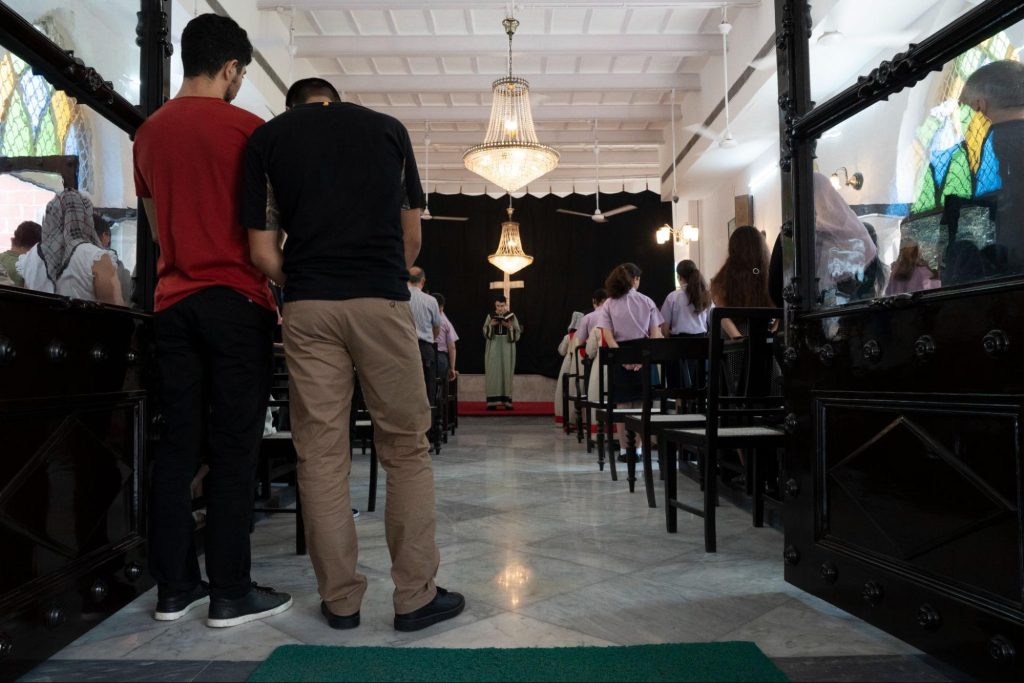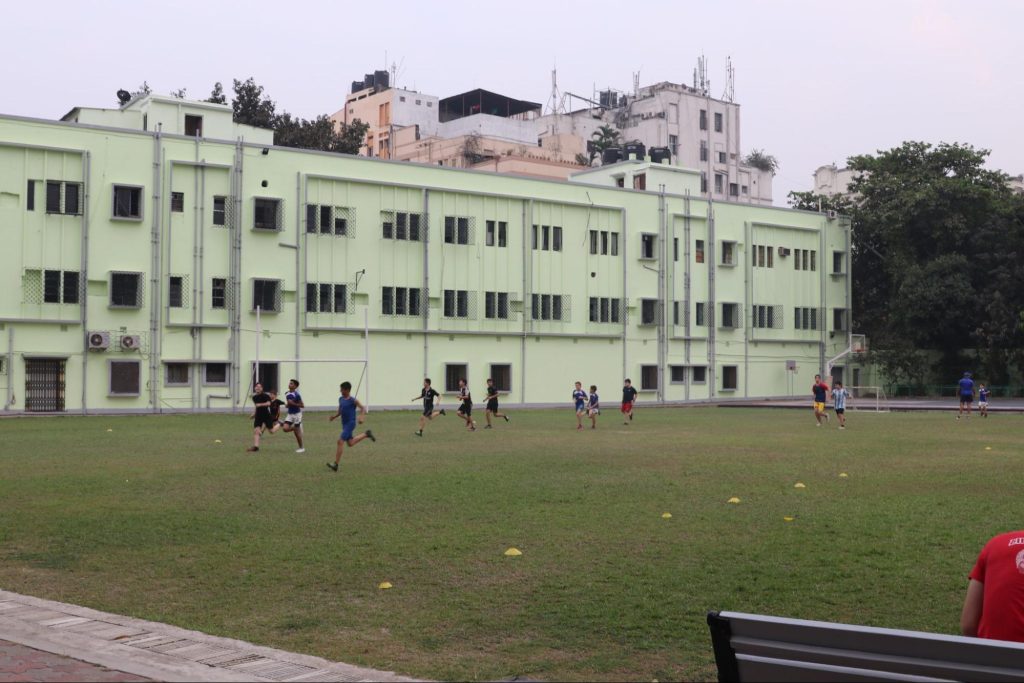By Mane Berikyan
KOLKATA, India — Victoria Stephen feared her community was on its way to extinction, until the Armenian Apostolic Church intervened. This is the reality for many members of Kolkata’s Armenian community, one of the oldest Armenian diasporas in the world. Today, Stephen sees an influx of Armenians arriving from Armenia, all recruited by the Apostolic Church.
“I’m very, very grateful that at least we have the Armenian church and school,” said Stephen. “It keeps the community alive. Without them, there would be hardly any Armenians.”
Stephen’s family has been living in Kolkata for generations. Born to a Bengali mother and an Armenian father, her mixed heritage is typical of the centuries-old Armenian community of India. Of those who live and die in Kolkata, many are already of mixed heritage — and many more marry outside of the community.
Stephen herself is no exception. Her husband is Chinese. While she speaks Armenian and was educated in the Armenian College and Philanthropic Academy — a primary through secondary school founded in 1821 by two Armenians from New Julfa — her son attends a local school and does not speak the language.
Although Indian Armenians like Stephen fear for the longevity of the community, many are encouraged by the constant inflow of students from Armenia and Iran, Iraq and Russia as well. Historically, the school has served as a safe haven for Armenian children from countries torn by conflict. In turn, the recent “revival” of Kolkata’s Armenian community has enabled new opportunities for diplomatic engagement between India and Armenia.
With neighboring Azerbaijan continuously posing heightened risks to Armenia’s security, especially after an ethnic cleansing campaign in 2023 which displaced Nagorno Karabakh’s entire population to Armenia, the country has been seeking new strategic partnerships beyond its traditional military ally Russia, which finds itself preoccupied with a war of its making in Ukraine. That search has led Armenia to become the top importer of Indian weapons in 2024, against the backdrop of a growing local diaspora community.
Sunday Mass and a Growing Church Presence

Incessant honking, bustling street noise and the sheer chaos of city life lie at the heart of Kolkata. Yet in one of its oldest communities, the Armenian Apostolic Church has created oases of seclusion away from the hubbub of the city that houses it.
Just two streets down from Park Street, the central vein that runs through Kolkata, the St. Gregory the Illuminator Armenian Church is nestled in an isolated pocket. A weekly shuttle from the Armenian College and Philanthropic Academy (commonly referred to as the Armenian College) carries dozens of church-goers, most of them students from the school, to a residential area, where a winding road leads to the church gates.
Once inside, Kolkata’s commotion fades to background noise, washed over by the serenity of church grounds. The Bengali language that fills every street corner is replaced by the Armenian chatter of schoolchildren filing in by the dozen, their uniforms neatly tucked in and adorned with the red, blue and apricot orange of Armenia’s flag.
From history to culture, Armenian presence in India is a key piece of the mosaic that is Kolkata. To this end, the Armenian Apostolic Church performs the delicate centuries-old balancing act between cultural preservation and co-existence with the greater Indian community.
The history of Armenians in Kolkata goes back to 1690 with the arrival of Armenian merchants engaged in the lucrative trade between Europe and the Far East. For two centuries, the Armenian College, a boarding school located in the heart of Kolkata, has sustained the community. Despite some troubles in the late 1990s when the Soviet Union collapsed and in 2019 when the school closed during the pandemic, it has remained open for over 200 years — a unique phenomenon in the Armenian diaspora.
Incessant honking, bustling street noise and the sheer chaos of city life lie at the heart of Kolkata. Yet in one of its oldest communities, the Armenian Apostolic Church has created oases of seclusion away from the hubbub of the city that houses it.
Just two streets down from Park Street, the central vein that runs through Kolkata, the St. Gregory the Illuminator Armenian Church is nestled in an isolated pocket. A weekly shuttle from the Armenian College and Philanthropic Academy (commonly referred to as the Armenian College) carries dozens of church-goers, most of them students from the school, to a residential area, where a winding road leads to the church gates.
Once inside, Kolkata’s commotion fades to background noise, washed over by the serenity of church grounds. The Bengali language that fills every street corner is replaced by the Armenian chatter of schoolchildren filing in by the dozen, their uniforms neatly tucked in and adorned with the red, blue and apricot orange of Armenia’s flag.
From history to culture, Armenian presence in India is a key piece of the mosaic that is Kolkata. To this end, the Armenian Apostolic Church performs the delicate centuries-old balancing act between cultural preservation and co-existence with the greater Indian community.
The history of Armenians in Kolkata goes back to 1690 with the arrival of Armenian merchants engaged in the lucrative trade between Europe and the Far East. For two centuries, the Armenian College, a boarding school located in the heart of Kolkata, has sustained the community. Despite some troubles in the late 1990s when the Soviet Union collapsed and in 2019 when the school closed during the pandemic, it has remained open for over 200 years — a unique phenomenon in the Armenian diaspora.
Watch more: Armenians Were Globalized Even Before “Globalization”
In Kolkata, however, the Armenian Church and the school are one and the same.
There are three Armenian churches in greater Kolkata (and five in the entire state of West Bengal). The clergy who oversee the school are assigned directly from the Mother See of Holy Etchmiadzin, the seat of the Patriarch of All Armenians. A committee of seven community members, known as the Armenian Church Committee, oversees all issues pertaining to the school and local community.
According to Vache Tadevosyan, a local community leader and a former teacher at the school, especially in the last twenty five years, when the churches and the school came under the jurisdiction of Holy Etchmiadzin, oversight has been stronger and clearer. Before 2000, the churches of India were part of the Armenian Church Diocese of Iran.
The church committee recruited young families from Armenia like Vache Tadevosyan and his wife, both of whom are musicians, to come and breathe new life into the Armenian community in Kolkata. Indian Armenians like Victoria Stephen, whose brother Zareh was one of only three students in the Armenian school before the Church’s renewed efforts, express concerns for the longevity of the community.
According to Stephen, most boarding school students end up returning to Armenia, and do not stay in Kolkata or put down roots. In the future, she hopes to see the Church do more to encourage Armenian students to stay in Kolkata after graduation, so the Indian Armenian community will grow.
Susan Reuben, a warden of the Armenian Church in Kolkata and one of the Committee’s longest-serving members, says she is cautiously optimistic about the future.
“It’s a small community, it’s dwindled a little bit. It used to be much more before. But a lot of people have gone away, emigrated, even the children,” Reuben said. “We are trying to build up the community again, so let’s see how things go.”
According to Reuben, the properties and funds owned by the community are enough to sustain generations to come. And these funds, per Indian law, must be spent in India. She says the committee can afford to keep bringing students from Armenia to study in Kolkata.
The church manages the school and its finances, and the spiritual leader of the Armenian community — known as the Holy Father — is also the manager of the school. Father Artsrun Mikaelyan, assistant to the school’s manager and a member of the Armenian clergy, described the relations between the Armenian Church and school in Kolkata as “very warm.”
“If we look at the history of the Armenian diaspora, the first issue that emerges whenever Armenians come together is that of preserving Armenianness,” said Father Artsrun.
“The first initiative is always the construction of a church and a school. It was the same here.”
According to Father Artsrun, the philanthropic academy and the church play the biggest role in preserving the cultural Armenian community in India. To this end, he emphasizes the significance of language.
“There are about fifty to sixty Indian Armenians here [in the community]. Of those, the ones who studied at the Armenian college speak Armenian. Those who didn’t, do not.”
The Armenians Father Artsrun described are those whose families have been living there for generations. Many of them have assimilated. The rest of Kolkata’s Armenian community is estimated to be around 120 strong, made up of the students and teachers at the boarding school. Many of these students do not continue to live in Kolkata after their graduation.

A Guest From New Delhi
Sunday mass, attended by schoolchildren and members of the Indian-Armenian community alike, brings together Kolkata’s Armenians each week.
One Sunday, a special guest joined churchgoers as they made the weekly excursion to St. Gregory the Illuminator. That guest was none other than Tigran Grigoryan, a counselor from the Embassy of Armenia in New Delhi. A week earlier, Armenian Foreign Minister Ararat Mirzoyan was in New Delhi for a conference, among other high-level visits between officials in Yerevan and New Delhi in recent months.
With new diplomatic prospects on the horizon for India and Armenia, it appears the job of the Indian Armenian community in Kolkata is not done just yet.
“The school is the strongest link [to Armenia] that has stayed these last 200 years,” Tadevosyan told CivilNet.
“Even all the diplomats — from Armenia or Indian diplomats — most of them visit us, stay in touch with us, show interest in us…especially from a cultural perspective.”
The post Armenian Diplomacy and the Church Breathe New Life to Kolkata Community appeared first on CIVILNET.